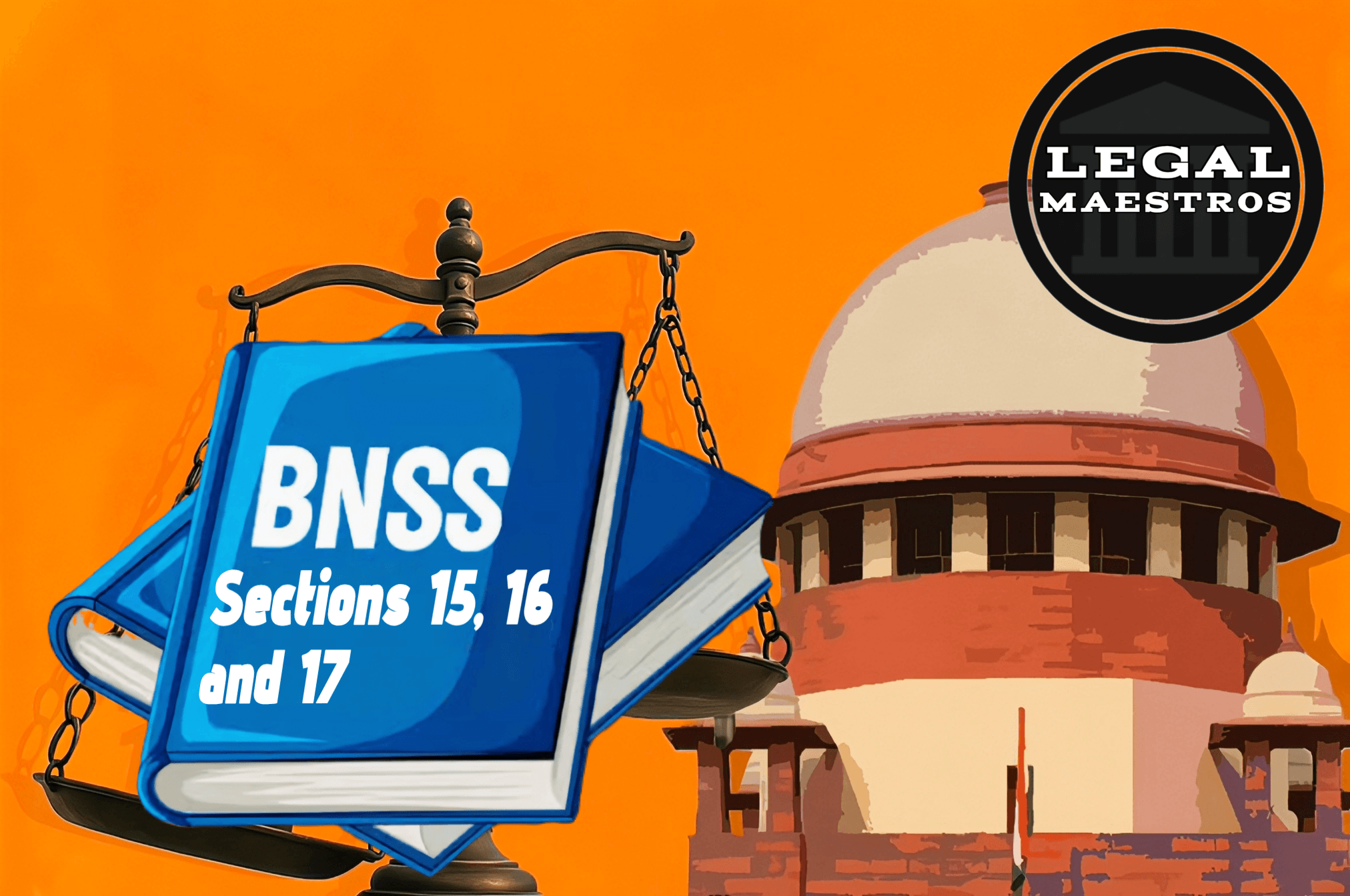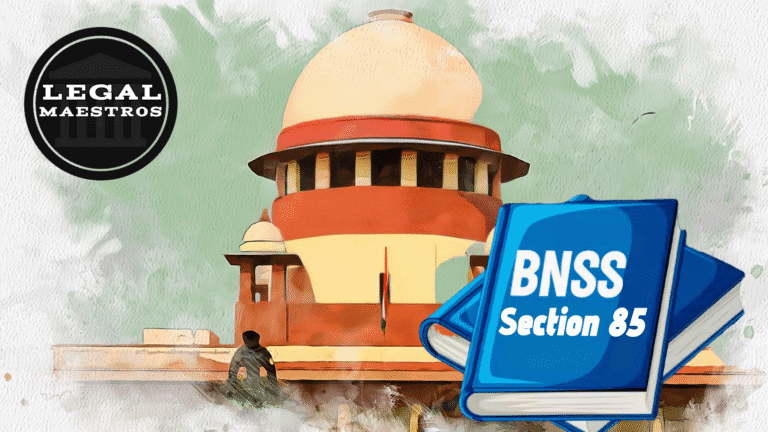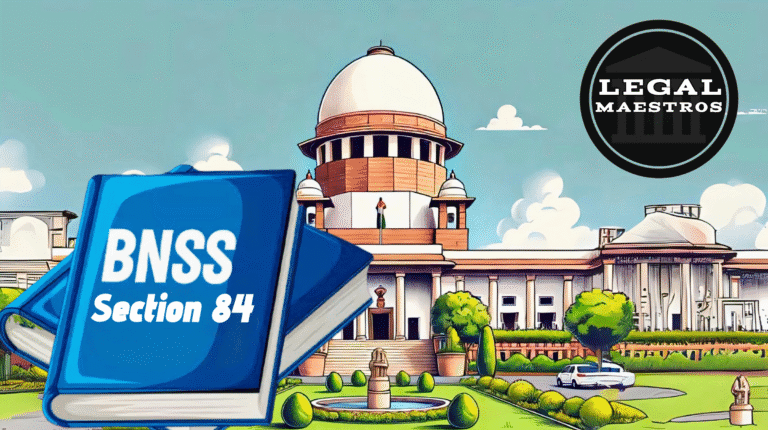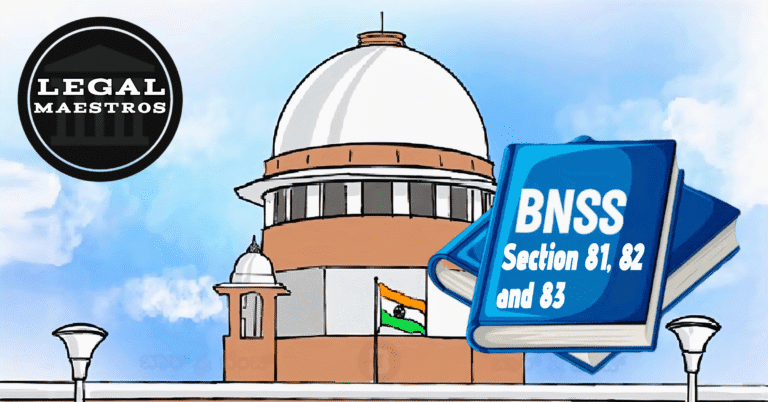
Section 15: Special Executive Magistrates
The State Government is granted the right to nominate individuals to the position of Special Executive Magistrates; this provision is included in this section. Executive Magistrates who are currently in service or police officers who hold a rank that is not lower than that of Superintendent of Police or an equivalent rank are both examples of candidates who could be appointed to these positions.
There is the possibility of these appointments being made for a particular term that the State Government deems to be acceptable. Depending on the circumstances or the requirements, the phrase may change. A senior police officer may be appointed by the State Government to serve as a Special Executive Magistrate for the duration of a large public event or an emergency situation such as a riot, for instance. This appointment would be in place for the duration of the event or crisis.
Providing the State Government with the ability to handle unusual events that require urgent or special administrative action is the goal of the appointment of Special Executive Magistrates so that the State Government can have more flexibility. There is the possibility that the Special Executive Magistrates will be allocated to a particular region or to carry out special responsibilities. As an illustration, they might be granted temporary authority to address law and order crises in the event of elections, circumstances involving law enforcement, or natural catastrophes.
For any queries or to publish an article or post or advertisement on our platform, do call at +91 6377460764 or email us at contact@legalmaestros.com.
The powers that are granted to these Special Executive Magistrates are identical to those that are granted to ordinary Executive Magistrates in accordance with the Sanhita; however, the State Government has the authority to decide whether or not to grant them for themselves. It follows that the government has the ability to modify the powers granted in accordance with the responsibilities that are anticipated to be carried out.
Here is an example: there is a large festival taking place in a city that is well-known for drawing enormous people, and there are worries over the control of the throng and the maintenance of public order. For the purpose of preventing potential threats and making prompt judgments to ensure peace and order during the event, the State Government may designate a senior police official to the position of Special Executive Magistrate for that city. This would allow them the authority to exercise the powers prescribed by the Sanhita.
Section 16: Local Jurisdiction of Executive Magistrates
The areas in which Executive Magistrates are able to use their authority are the primary subject of this section.
For any queries or to publish an article or post or advertisement on our platform, do call at +91 6377460764 or email us at contact@legalmaestros.com.
According to the provisions of subsection (1), the District Magistrate, who is subject to the overall control of the State Government, is vested with the authority to establish the geographical boundaries within which Executive Magistrates are permitted to exercise their powers. The limits that have been established are not set in stone and can be altered or rethought on a regular basis, based on the requirements of the administrative department.
The purpose of this rule is to guarantee that the responsibilities of Executive Magistrates are clearly delineated, so preventing any instances of overlap or confusion regarding the authority that each magistrate possesses in certain areas. By distinctly delineating the various jurisdictions, it encourages accountability and facilitates effective governance.
It is made clear in subsection (2) that the jurisdiction of each Executive Magistrate extends to the entirety of the district, unless the District Magistrate has expressly declared differently. To put it another way, every Executive Magistrate, by default, has authority over the entire district, unless they are specifically limited to a lesser region.
For any queries or to publish an article or post or advertisement on our platform, do call at +91 6377460764 or email us at contact@legalmaestros.com.
Consider the following scenario: a district is represented by five tehsils, and an Executive Magistrate is selected to serve in that district. In the event that the District Magistrate does not issue any orders that restrict their authority to only one or two tehsils, then the Executive Magistrate is able to carry out their responsibilities in each of the five tehsils that make up that neighborhood. On the other hand, if the District Magistrate makes an order indicating that this particular Magistrate can only function in Tehsil A and Tehsil B, then the Magistrate’s jurisdiction will be restricted to only those two different locations.
Having this degree of adaptability is absolutely necessary in order to guarantee that Executive Magistrates are assigned in a manner that is tailored to the particular administrative and law enforcement requirements of a district.
For More Updates & Regular Notes Join Our Whats App Group (https://chat.whatsapp.com/DkucckgAEJbCtXwXr2yIt0) and Telegram Group ( https://t.me/legalmaestroeducators )
For any queries or to publish an article or post or advertisement on our platform, do call at +91 6377460764 or email us at contact@legalmaestros.com.
Section 17: Subordination of Executive Magistrates
Within the Executive Magistrates, this section discusses the chain of command and the subordination that exists between them.
In accordance with the provisions of subsection (1), the District Magistrate is the superior authority over all Executive Magistrates. As a result, the District Magistrate is the individual who exercises the highest level of administrative authority over all of the other Executive Magistrates who are employed within the district.
Furthermore, in regions where a sub-division is present, which is a smaller unit within a district, the Executive Magistrates who are employed in that sub-division are also subordinate to the Sub-divisional Magistrate. Their accountability to the District Magistrate is not, however, superseded by the fact that they are subordinate to the Sub-divisional Magistrate. It is still the case that the District Magistrate exercises overall authority over all Executive Magistrates, even those who fall under the jurisdiction of the Sub-divisional Magistrate.
For any queries or to publish an article or post or advertisement on our platform, do call at +91 6377460764 or email us at contact@legalmaestros.com.
The establishment of a clear framework of responsibility and oversight is ensured by this hierarchy. It facilitates the smooth implementation of administrative decisions and makes it easier for different officers working within the same district to coordinate their efforts.
Consider the following example: a district that is divided into three sub-divisions. There is a Sub-divisional Magistrate and a group of Executive Magistrates assigned to each specific sub-division. These Executive Magistrates are generally overseen by the Sub-divisional Magistrates that operate within their respective jurisdictions. Notwithstanding this, the District Magistrate retains the authority to issue directives to any Executive Magistrate within the district, irrespective of the sub-division in which they are located. In the event that there is a crisis that affects the entire district, such as a flood, the District Magistrate has the authority to instruct all Executive Magistrates to coordinate relief efforts that go outside the typical chain of command.
The District Magistrate is granted the authority to formulate rules or issue special orders in accordance with the provisions of subsection (2), which pertain to the distribution of tasks among the Executive Magistrates who fall within his jurisdiction. The Sanhita must be adhered to in order for these rules or special orders to remain consistent. Through the implementation of this regulation, the District Magistrate is able to effectively distribute work among Executive Magistrates, taking into account their capabilities, expertise, and availability.
For any queries or to publish an article or post or advertisement on our platform, do call at +91 6377460764 or email us at contact@legalmaestros.com.
Emergency situations, times of public upheaval, and administrative backlogs are all situations in which this is especially helpful. It is possible for the District Magistrate to make rapid adjustments to the tasks and responsibilities of Executive Magistrates in order to accommodate the ever-evolving requirements of the district.
Take, for example, the scenario in which there is an unexpected breakout of violence in a particular section of the area. There is a possibility that the District Magistrate will make the decision to transfer an Executive Magistrate from a tranquil region to a difficult zone. It is possible for him to make a special order that directs this adjustment, which will ensure that the region that is experiencing disturbance receives the necessary attention and administrative support.




![Research Assistantship @ Sahibnoor Singh Sindhu, [Remote; Stipend of Rs. 7.5k; Dec 2025 & Jan 2026]: Apply by Nov 14, 2025!](https://legalmaestros.com/wp-content/uploads/2025/11/Gemini_Generated_Image_s0k4u6s0k4u6s0k4-768x707.png)
![Karanjawala & Co Hiring Freshers for Legal Counsel [Immediate Joining; Full Time Position in Delhi]: Apply Now!](https://legalmaestros.com/wp-content/uploads/2025/11/Gemini_Generated_Image_52f8mg52f8mg52f8-768x711.png)
![Part-Time Legal Associate / Legal Intern @ Juris at Work [Remote]: Apply Now!](https://legalmaestros.com/wp-content/uploads/2025/11/ChatGPT-Image-Nov-12-2025-08_08_41-PM-768x768.png)
![JOB POST: Legal Content Manager at Lawctopus [3-7 Years PQE; Salary Upto Rs. 70k; Remote]: Rolling Applications!](https://legalmaestros.com/wp-content/uploads/2025/11/ChatGPT-Image-Nov-12-2025-08_01_56-PM-768x768.png)